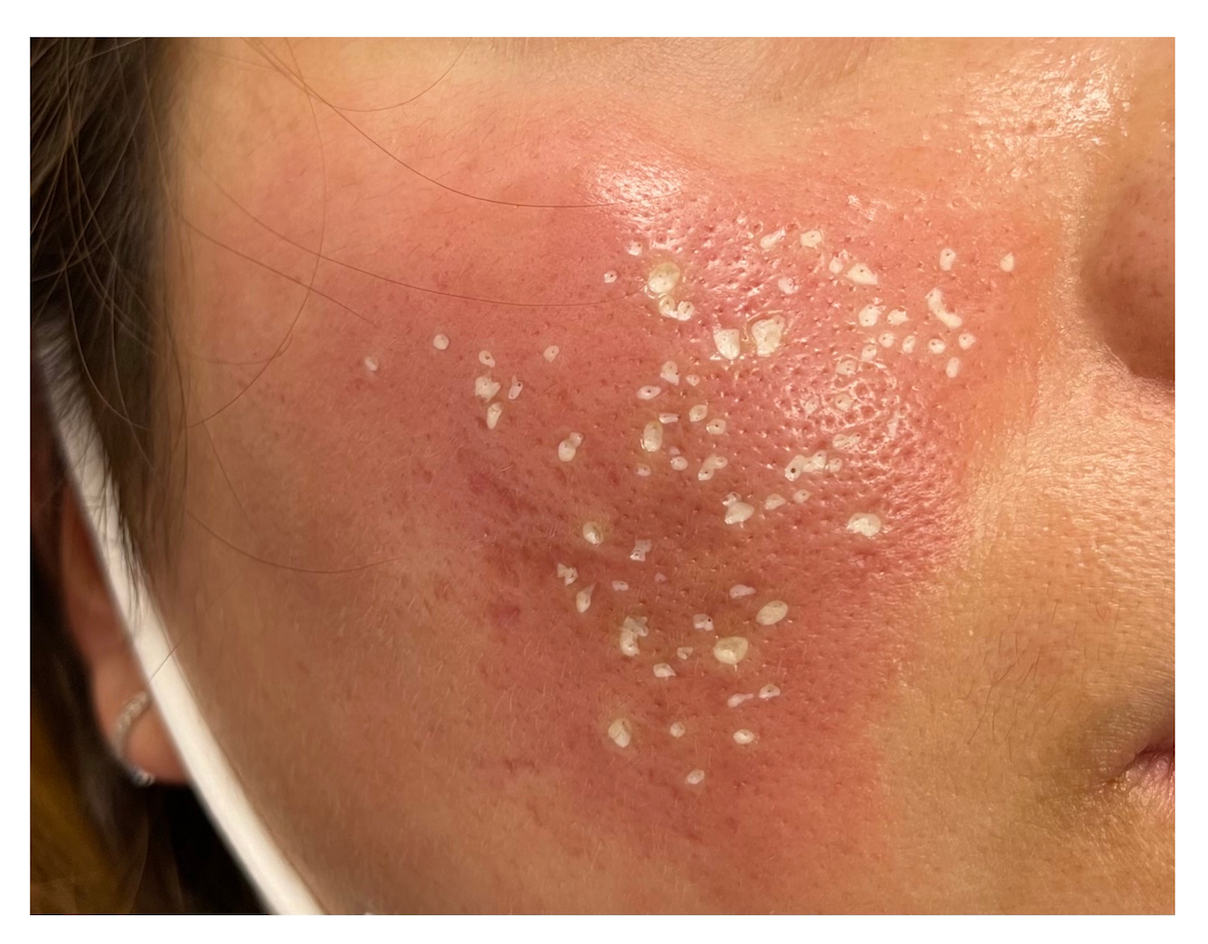Athena Skin Hair & Dental Clinic
TCA Cross

What is TCA Cross
Symptoms and Types of Scars Treated
TCA CROSS is primarily used to treat atrophic scars, which are depressions in the skin caused by the loss of underlying tissue. The common types of scars that can be treated with TCA CROSS include:
Ice Pick Scars – Narrow, deep scars that extend into the skin.
Boxcar Scars – Broad depressions with defined edges.
Rolling Scars – Scars that create a wavy appearance on the skin.
These scars are often left behind by severe acne, trauma, or surgical procedures and can be difficult to treat with conventional methods.
Procedure and Treatment Process
Step-by-Step Procedure:
Preparation: The skin is thoroughly cleansed, and the target area is marked for precision.
Application of TCA: A high concentration (typically 50-100%) of trichloroacetic acid is applied precisely into each scar using a fine applicator, such as a toothpick or micro-needle.
Reaction Phase: The acid induces a controlled chemical injury to the scar tissue, leading to localized inflammation and collagen remodeling.
Healing: Over time, the treated area scabs over and regenerates with new skin.
Follow-Up: Multiple sessions (typically 3-6) are needed at 4-6 week intervals for optimal results.
Causes of Atrophic Scars
Atrophic scars develop due to insufficient collagen production during wound healing. Common causes include:
Severe Acne: Inflammatory acne damages the skin, leading to depressions.
Chickenpox or Infections: Skin infections can leave indentations.
Surgical or Traumatic Injuries: Deep cuts or surgeries may result in depressed scars.
Genetic Factors: Some individuals are more prone to scarring due to their skin type.
Prevention of Acne Scarring
While TCA CROSS is an effective treatment, preventing acne scars is always preferable. Steps to reduce the risk of scarring include:
Early Acne Treatment: Treat acne promptly to minimize inflammation.
Avoid Picking or Squeezing Pimples: This prevents deep tissue damage.
Use Sunscreen: Protecting the skin from UV exposure helps prevent darkening of scars.
Proper Skincare Routine: Use gentle exfoliants, retinoids, and hydrating products to maintain skin health.
Seek Professional Care: Consult a dermatologist for proper acne management and scar prevention strategies.
Recovery and Expected Results
Recovery Timeline:
1-2 Days: Redness and mild inflammation occur at the treated sites.
3-7 Days: Scabbing forms and begins to flake off naturally.
2-4 Weeks: New skin regeneration is noticeable.
3-6 Months: Collagen remodeling improves the overall skin texture and reduces scar depth.
Post-Treatment Care:
Avoid Picking Scabs: Let the healing process occur naturally.
Use Sunscreen: Prevent hyperpigmentation by applying SPF 30+ daily.
Moisturize and Hydrate: Keep the skin hydrated to promote faster healing.
Follow Dermatologist’s Instructions: Use prescribed ointments or creams as recommended.
Results:
Noticeable improvement is seen after a few sessions.
Skin texture becomes smoother, and scars appear shallower over time.
Optimal results are typically achieved after 3-6 treatments.
